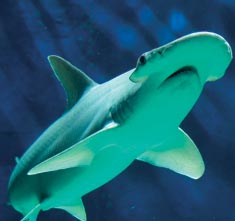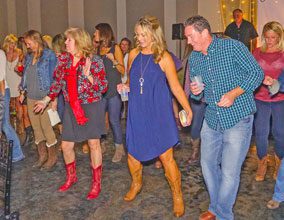Organized t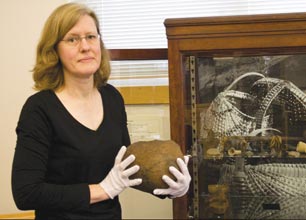 o promote the little known story of America’s first colonel capital, the Santa Elena Foundation is reliant upon a small but distinctive group of historians and archaeologists. This team assembled in Beaufort last week to craft a Santa Elena timeline, which will be the basic for future research.
o promote the little known story of America’s first colonel capital, the Santa Elena Foundation is reliant upon a small but distinctive group of historians and archaeologists. This team assembled in Beaufort last week to craft a Santa Elena timeline, which will be the basic for future research.
Dr. Karen Paar (above) is an archivist and historian. Karen Paar grew up in Raleigh, NC, attended Oberlin College in Ohio, and completed a Ph.D. in Latin American History at the University of North Carolina at Chapel Hill. Paar wrote her dissertation on the Santa Elena colony. As Research Assistant Professor at the Institute for Southern Studies at the University of South Carolina, Dr. Paar continued her grant-funded research on Santa Elena. Dr. Paar returned to North Carolina and attended library school at North Carolina Central University while working at the North Carolina State University Libraries. Karen Paar currently lives in western North Carolina and is the Director of the Liston B. Ramsey Center for Regional Studies and Archivist of the Southern Appalachian Archives at Mars Hill University. She continues her research on Santa Elena in her spare time.
Dr. Paul Hoffman is the Murrill Distinguished Professor of History at Louisiana State 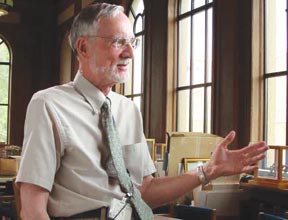 University. He received his PhD from the University of Florida. Dr. Hoffman is author of the award-winning A New Andalucia and a Way to the Orient (published in 1990 and again in 2004) and Florida’s Frontiers (published in 2002); he is author of four other books, and numerous other writings. With Dr. Eugene Lyon he worked with the St. Augustine Foundation, Inc. to propose a living history museum for the 16th century town. Recently he edited issues of the Florida Historical Quarterly dedicated to scholarship on the 16th century. He delivered the first Jerrell Shofner Lecture for the Florida Historical Society at the University of Central Florida (La Florida : Thoughts About a Story Still Largely Untold). His scholarship also includes essays on the 16th century cartography of North America and the role of the ecology of the Southeast in early Spanish settlement. He is a Fellow of the Louisiana Historical Association, and recipient of McGinty Life-time achievement award.
University. He received his PhD from the University of Florida. Dr. Hoffman is author of the award-winning A New Andalucia and a Way to the Orient (published in 1990 and again in 2004) and Florida’s Frontiers (published in 2002); he is author of four other books, and numerous other writings. With Dr. Eugene Lyon he worked with the St. Augustine Foundation, Inc. to propose a living history museum for the 16th century town. Recently he edited issues of the Florida Historical Quarterly dedicated to scholarship on the 16th century. He delivered the first Jerrell Shofner Lecture for the Florida Historical Society at the University of Central Florida (La Florida : Thoughts About a Story Still Largely Untold). His scholarship also includes essays on the 16th century cartography of North America and the role of the ecology of the Southeast in early Spanish settlement. He is a Fellow of the Louisiana Historical Association, and recipient of McGinty Life-time achievement award.
Dr. Eugene Lyon,A Florida native, served in the Korean War aboard the USS Hobson (DMS-26). He holds a Ph.D. degree from the University of Florida, and is a specialist in Spanish Colonial Florida and the Spanish maritime system.
Lyon’s publications includeThe Enterprise of Florida, The Search for the Atocha, and Pedro  Menéndez de Avilés, a Sourcebook. The St. Augustine Historical Society published his book,Richer Than We Thought, and the University of South Carolina Press publishedSanta Elena: A Brief History of the Colony. He wrote a monograph on Spanish colonial nails. He has written many conference papers, book chapters, and five National Geographic articles—including two cover articles for National Geographic. One of those featured previously unpublished data on Christopher Columbus’s caravelNiña.
Menéndez de Avilés, a Sourcebook. The St. Augustine Historical Society published his book,Richer Than We Thought, and the University of South Carolina Press publishedSanta Elena: A Brief History of the Colony. He wrote a monograph on Spanish colonial nails. He has written many conference papers, book chapters, and five National Geographic articles—including two cover articles for National Geographic. One of those featured previously unpublished data on Christopher Columbus’s caravelNiña.
Lyon directed the St. Augustine Foundation for fourteen years. The Foundation holds more than a thousand reels of film of materials related to Spanish Florida. From data in the Archives of the Indies, Lyon enabled salvor Mel Fisher to locate and definitively identify the sunken shipsNuestra Señora de AtochaandSanta Margaritain the lower Florida Keys.
Eugene Lyon received the grade of Official in the Order of Isabella from King Juan Carlos of Spain, and the grade of Comendador in the Order of Christopher Columbus from the President of the Dominican Republic. The City of St. Augustine granted him its highest honor, the Order of La Florida, and in 2003 the Florida Historical Society gave him the Jillian Prescott Award for lifetime service to Florida history. In 2005, he received the Mel Fisher Lifetime Achievement Award.
Dr. Chester DePratter received his Ph.D. in Anthropology from the University of Georgia in  1983. His varied interests include coastal Georgia and South Carolina geology/archaeology, migrations of Native Americans across the southeastern United States in the seventeenth and eighteenth centuries, Civil War prison camps, and Spanish colonial ventures in “La Florida.” As part of this latter interest he has conducted extensive excavations at Santa Elena (1566-1587). This work led to his discovery of the location of the French Charlesfort established on Parris Island in 1562. His work includes the identification of the routes of several sixteenth century Spanish expeditions to interior “La Florida” including those of Hernando de Soto, Tristan de Luna, and Juan Pardo; this work has helped redraw the map of the interior southeast and the locations of its Native American peoples in the sixteenth century. More recently he has worked in Mississippi and identified the locations for two 1736 battles between the Chickasaw and the French colonists there.
1983. His varied interests include coastal Georgia and South Carolina geology/archaeology, migrations of Native Americans across the southeastern United States in the seventeenth and eighteenth centuries, Civil War prison camps, and Spanish colonial ventures in “La Florida.” As part of this latter interest he has conducted extensive excavations at Santa Elena (1566-1587). This work led to his discovery of the location of the French Charlesfort established on Parris Island in 1562. His work includes the identification of the routes of several sixteenth century Spanish expeditions to interior “La Florida” including those of Hernando de Soto, Tristan de Luna, and Juan Pardo; this work has helped redraw the map of the interior southeast and the locations of its Native American peoples in the sixteenth century. More recently he has worked in Mississippi and identified the locations for two 1736 battles between the Chickasaw and the French colonists there.
Dr. David Moore received his B.A. from the University of California at Berkeley and his 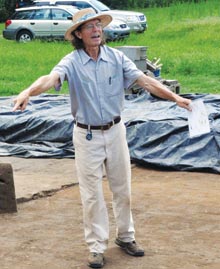 MA and Ph.D. from the University of North Carolina. He served as the North Carolina Western Office archaeologist for 18 years before becoming a full-time faculty member at Warren Wilson College in Asheville, NC. Dr. Moore has directed the archaeological investigations at the Berry site since 1986. He is the author and co-author of numerous book chapters and articles. Dr. Moore and his colleagues, Dr. Robin Beck (University of Michigan) and Dr. Christopher Rodning (Tulane University) submitted a monograph on the work at Joara including the archaeological discovery of Fort San Juan established by the Spanish explorer Juan Pardo from Santa Elena in 1566.
MA and Ph.D. from the University of North Carolina. He served as the North Carolina Western Office archaeologist for 18 years before becoming a full-time faculty member at Warren Wilson College in Asheville, NC. Dr. Moore has directed the archaeological investigations at the Berry site since 1986. He is the author and co-author of numerous book chapters and articles. Dr. Moore and his colleagues, Dr. Robin Beck (University of Michigan) and Dr. Christopher Rodning (Tulane University) submitted a monograph on the work at Joara including the archaeological discovery of Fort San Juan established by the Spanish explorer Juan Pardo from Santa Elena in 1566.


